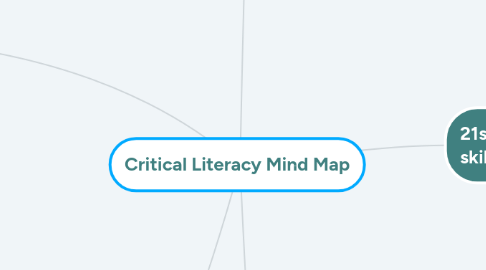
1. Karpati's definition of the essential component of digital literacy
1.1. Karpati (2011) states that for future computer users and ICT professionals, the essential component of digital literacy is: > Accessing > Managing > Evaluating > Integrating > Making > Communicating information individually or collaboratively on networks, supported by computers, and web-based environments for study, work, or recreation.
2. ICT UNESCO framework state level of competence
2.1. Knowledge Creation
2.1.1. Knowledge Deepening
2.1.1.1. Knowledge Acquisition
2.2. Policy Innovation
2.2.1. Policy Application
2.2.1.1. Policy Understanding
2.2.1.1.1. Understanding ICT in Education
2.3. Knowledge Society Skills
2.3.1. Knowledge Application
2.3.1.1. Basic Knowledge
2.3.1.1.1. Curriculum and Assessment
2.4. Self- management
2.4.1. Complex Problem-solving
2.4.1.1. ICT-enhanced Teaching
2.4.1.1.1. Pedagogy
2.5. Transformation
2.5.1. Infusion
2.5.1.1. Application
2.5.1.1.1. Application and Digital Skills
2.6. Learning Organizations
2.6.1. Collaborative Groups
2.6.1.1. Standard Classroom
2.6.1.1.1. Organization and Administration
2.7. Teacher as Innovator
2.7.1. Networking
2.7.1.1. Digital Literacy
2.7.1.1.1. Teacher Professional Learning
3. 21st century skills and how is those skills employ to critical literacy
3.1. 21st Century skills are 12 abilities that today’s students need to succeed in their careers during the Information Age.
3.1.1. Learning skills (critical thinking, creativity, collaboration, communication) teaches students about the mental processes required to adapt and improve upon a modern work environment.
3.1.2. Literacy skills (information literacy, media literacy, technology literacy) focuses on how students can discern facts, publishing outlets, and the technology behind them. There’s a strong focus on determining trustworthy sources and factual information to separate it from the misinformation that floods the Internet.
3.1.3. Life skills (flexibility, leadership, initiative, productivity, social skills) take a look at intangible elements of a student’s everyday life. These intangibles focus on both personal and professional qualities.
3.2. 21st Century skills have always been important, they become essential in a worldwide market that moves faster by the day. These skills all double back to one key focus; someone's ability to enact and/or adapt to change. This is because any industry is capable of changing at a moment's notice. The world has entered an era where nothing is guaranteed. As a result, students need to learn to guide the change that'll inundate their lives. At the very least, they need to know how to react to it. Otherwise, they'll be left behind.
4. Bloom Taxonomy, Anderson and Karthworl influence to the critical thinking
4.1. Bloom, Anderson and Krathwohl (2001) changed and improved the taxonomy to make it much easier for educators to use. The taxonomy provides a complete set of classifications for learners' cognitive processes. This taxonomy can be used to classify instructional objectives and define the levels of learning.
4.2. In 1956, Benjamin Bloom published the first cognitive taxonomy for classifying educational goals. The book classified educational goals based on the cognitive processes that learners must engage to achieve them.
4.3. Bloom's Taxonomy or classification of the cognitive domain or category is a model of classifying thinking according to six cognitive levels. The lower three levels include remembering, understanding, and applying. Analysing, evaluating, and creating are the higher three levels of thinking.
5. Global standards incorporating into the teachers competence
5.1. Globally competent teaching is the interconnected set of dispositions, knowledge, and skills needed to instil in students the qualities they'll need to thrive in this diverse, interconnected world, such as appreciating different perspectives and cultures, understanding global conditions and events, communicating and collaborating with people from different countries and cultures, and acting on issues.
5.1.1. 1. Create a classroom environment that values diversity and global engagement 2. Integrate content-aligned global learning experiences 3. Develop local and global partnerships
